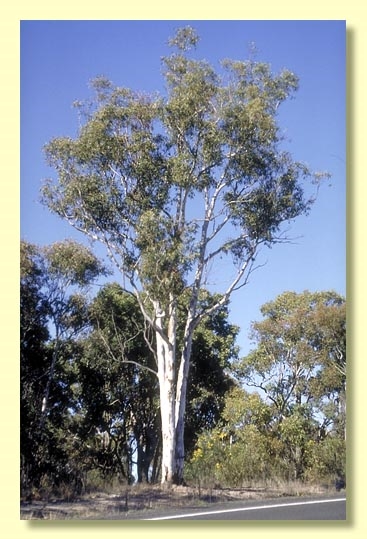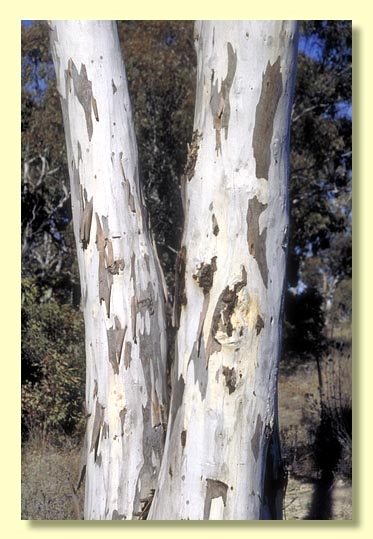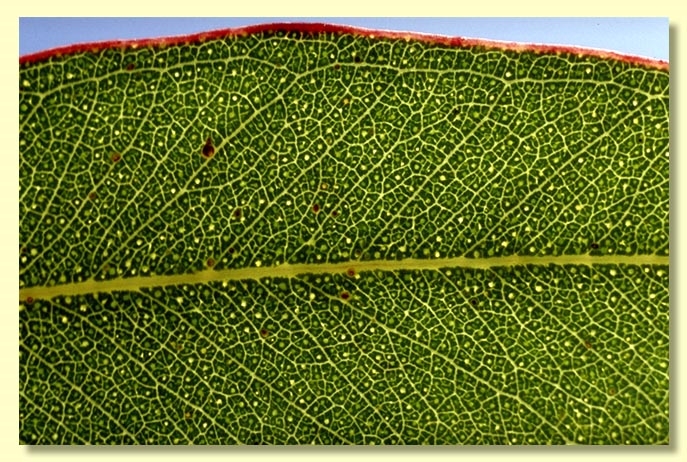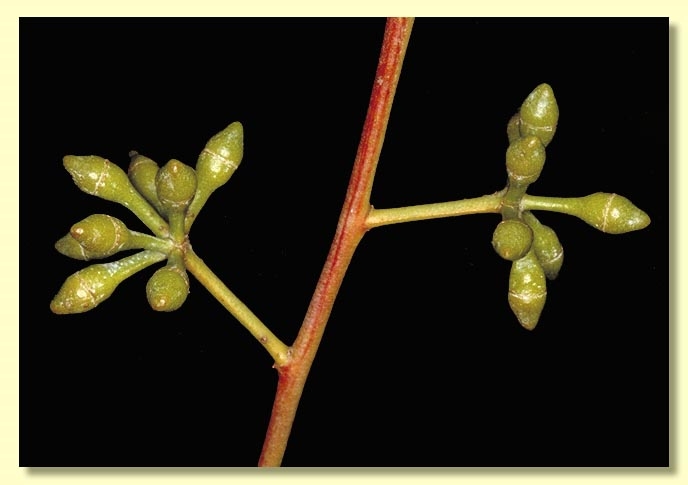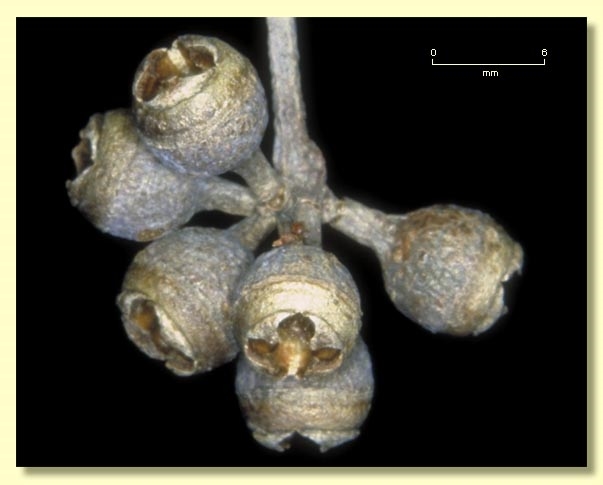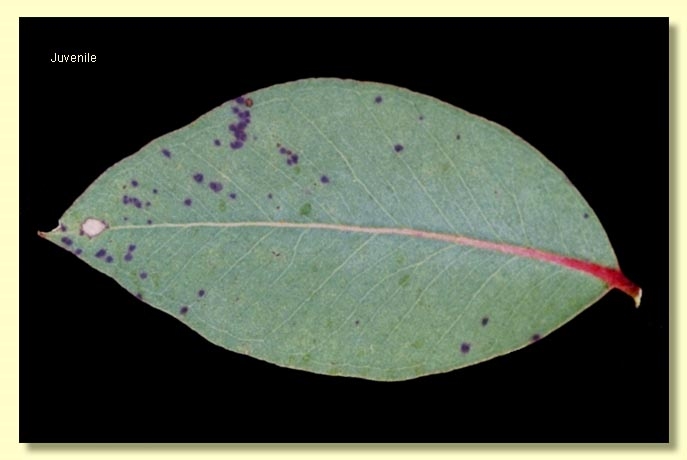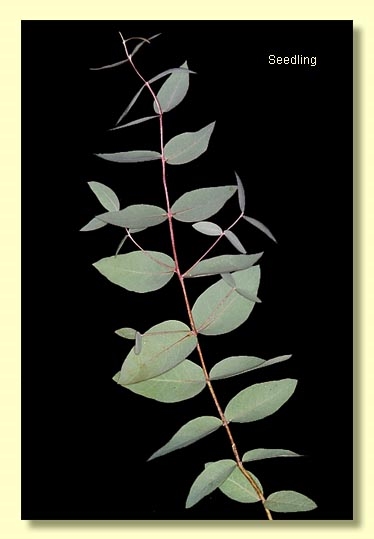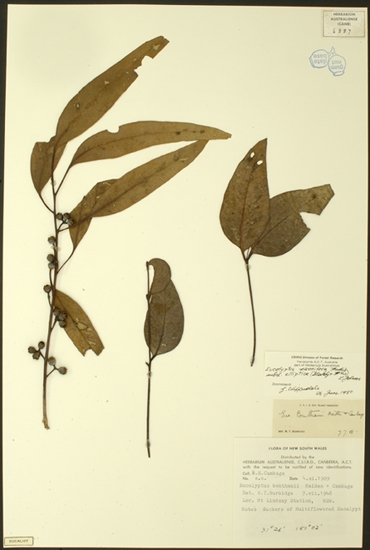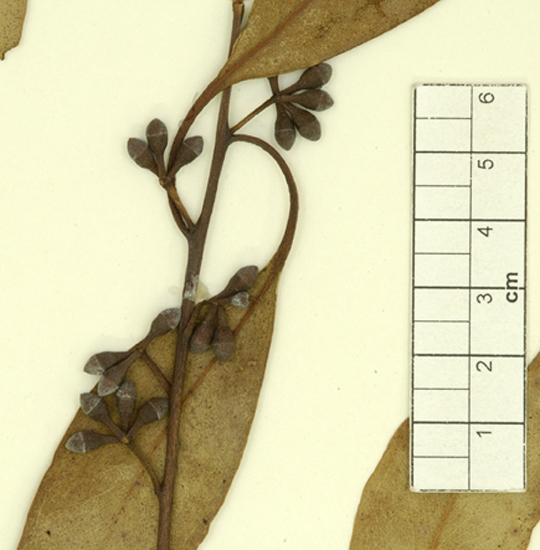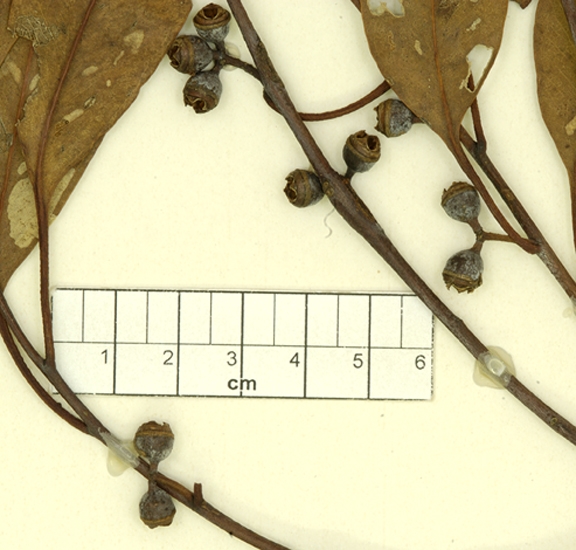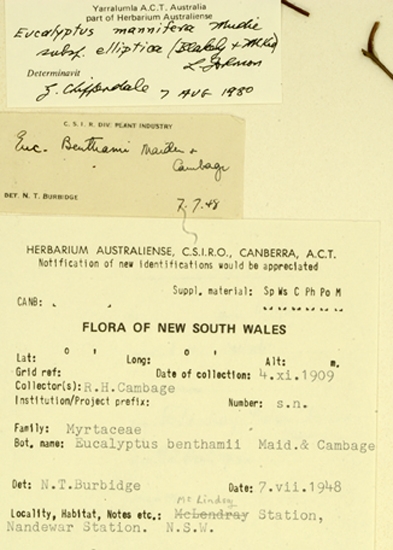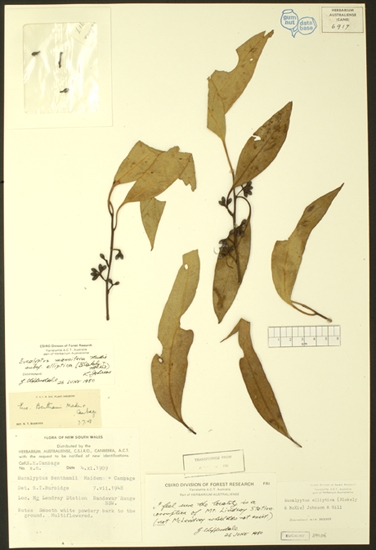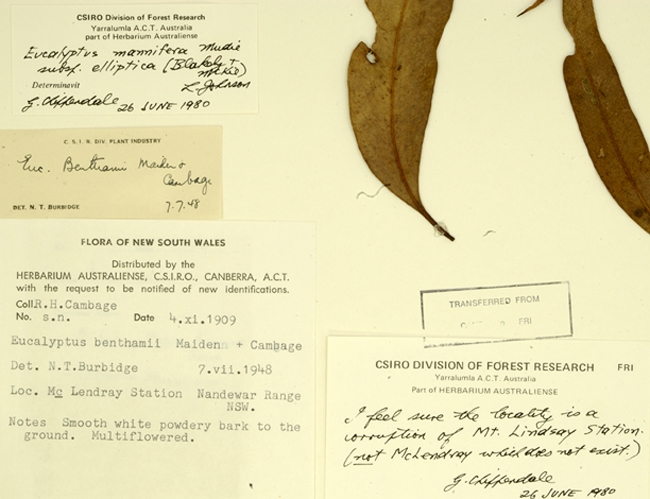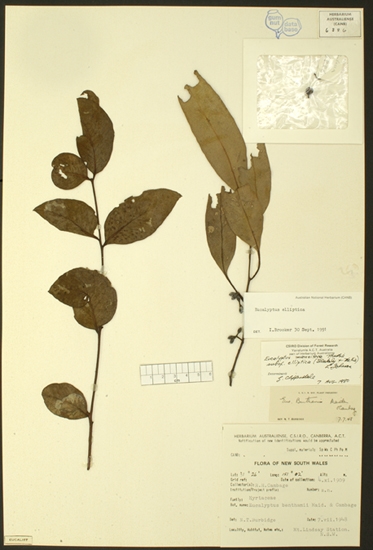Euclid - Online edition
Eucalyptus elliptica
Eucalyptus | Symphyomyrtus | Maidenaria | Triangulares | Microcarpae
E. mannifera Mudie var. elliptica Blakely & McKie in W.F.Blakely, Key Eucalypts 148 (1934); Eucalyptus mannifera Mudie subsp. elliptica (Blakely & McKie) L.A.S.Johnson, Contr. New South Wales Natl Herb. 3: 108 (1962). T: Mt Lindsay Stn, Nandewar Mts, NSW, 4 Nov. 1909, R.H.Cambage s.n.; holo: NSW; iso: CANB.
Bark smooth, usually powdery, white with yellow, orange or grey patches, horizontal black scars sometimes present on trunk.
Juvenile growth (coppice or field seedlings to 50 cm): stem rounded in cross-section, glaucous; juvenile leaves opposite, sessile for many pairs, becoming alternate and petiolate in late juvenile phase, orbicular at first then ovate to elliptical, 2–10 cm long, 2–6 cm wide, blue-green or glaucous.
Adult leaves alternate, petiole 0.9–4.5 cm long; blade lanceolate to falcate, 7–20 cm long, 1.3–3 cm wide, base tapering to petiole, concolorous, glossy or dull, green to blue-green, side-veins greater than 45° to midrib, densely to very densely reticulate, intramarginal vein parallel to and remote from margin, oil glands island or intersectional.
Inflorescence axillary unbranched, peduncles 0.4–1.7 cm long, buds 7 per umbel, pedicels 0.1–0.5 cm long. Mature buds ovoid, 0.5–0.8 cm long, 0.3–0.4 cm wide, green to yellow, sometimes glaucous, scar present, operculum conical, stamens irregularly flexed, anthers cuboid or cuneate, versatile, dorsifixed, dehiscing by longitudinal slits (non-confluent), style long, stigma blunt, locules 3 or 4, the placentae each with 4 vertical ovule rows. Flowers white.
Fruit pedicellate (pedicels 0.1–0.4 cm long), cup-shaped or hemispherical, 0.4–0.6 cm long, 0.5–0.8 cm wide, disc raised convex or oblique, valves 3 or 4, exserted.
Seeds brown, black or grey, 1–2.1 mm long, ovoid or flattened-ovoid, often pointed at one end, lacunose, dorsal surface smooth or shallowly pitted, hilum ventral.
Cultivated seedlings (measured at ca node 10): cotyledons bilobed to oblong; stems rounded in cross-section, smooth to slightly warty, glaucous; leaves sessile and opposite for at least 17 nodes, ovate or cordate, 5–7.5 cm long, 3–4.5 cm wide, lower leaves amplexicaul but becoming rounded up stem, margin entire, apex pointed, dull, blue-green to grey-green (new growing tips waxy but wax not persisting on expanded leaves).
Flowering has been recorded in July and November.
A small to medium-sized smooth-barked tree found on granite hills, mainly in the Bendemeer and Walcha area of the Northern Tablelands of New South Wales.
Eucalyptus elliptica is noted for its elliptical juvenile leaves and buds with long pedicels. Within its natural range it is distinguished from two other species of white gum, E. dalrympleana subsp. heptantha and E. rubida, by its distinctly pedicellate buds and fruit. The buds and fruit of E. elliptica are rounded basally and the pedicels slender whilst in both E. rubida and E. dalrympleana subsp. heptantha the pedicels are less clearly defined, being shorter and thicker, tapering gradually into the base of buds and fruit. E. rubida differs also in commonly being three-budded and having glaucous ± orbicular juvenile leaves, whilst E. dalrympleana subsp. heptantha has buds predominantly in sevens, sometimes in threes also, but with non-glaucous orbicular-ovate juvenile leaves, and fruit cupular in outline. Trees of all three species may have some rough bark at the very base. The bark of both E. elliptica and E. rubida is often disfigured by horizontal black insect scars.
Eucalyptus elliptica is closely related to the E. mannifera complex of species and within that group is probably closest to the more southerly E. mannifera subsp. gullickii, which is distinguished by having smaller elliptical juvenile leaves and by its tendency to grow near swamps or areas of poor drainage.
Eucalyptus elliptica belongs in Eucalyptus subgenus Symphyomyrtus section Maidenaria, a large group of species more or less restricted to south-eastern Australia, characterised by bilobed cotyledons, simple axillary inflorescences, buds with two opercula, stamens with versatile anthers and flattened seeds with a ventral hilum. Within this section E. elliptica and four other species form series Microcarpae diagnosed by the smooth white bark, juvenile leaves that are shortly petiolate, non-swampy habitat, and small, rather flat-topped fruit. The species are E. elliptica, E. mannifera (3 subspecies), E. dorrigoensis and E. scoparia. Seedling leaf-shape distinguishes these 6 taxa.

